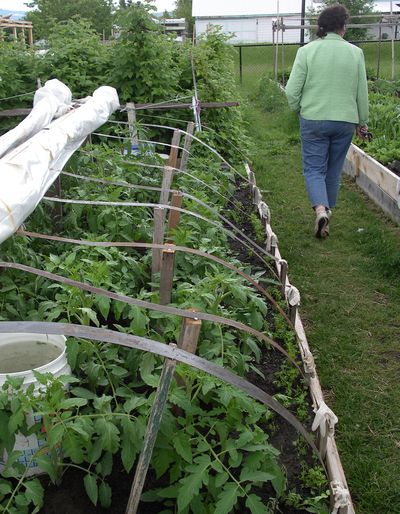Plant a Row benefits food banks

The hot trend this year is definitely vegetable gardening. Vegetable starts and seeds are flying off the shelves at plant sales and garden stores. By August, Spokane is going to be swimming in luscious sweet tomatoes, peppers, corn and beans.
Nationally, the popularity of vegetable gardening has risen. The reasons are pretty obvious. With the recent vegetable contamination scares, people want to know where their food is coming from. Younger gardeners want their landscapes to give something back, so they are planting vegetables instead of ornamentals. Lastly, with the economy in a tailspin, people just want to save money. Regardless of why you are planting a vegetable garden, my bet is you are going to have more than you can use come harvest time.
A lot of folks in our community are counting on that happening. Many of our neighbors, friends and co-workers, finding themselves on the short end of the economic stick, are trying to find ways to keep food on the table, gas in the car and a roof over their heads. They would love to have those extra carrots, beans, tomatoes, squash and potatoes.
So, folks, it’s time to pull out a little of that Spokane spirit and plant some extra rows in the vegetable garden to help the rest of our community weather these trying times. When it all gets ripe, Plant a Row for the Hungry, in cooperation with Second Harvest Inland Northwest, would like you to donate the extra to a local food bank. The goal is 100,000 pounds or 400,000 servings of fresh vegetables and fruit by the end of October.
Almost any vegetable or fruit is welcomed, but sturdy vegetables and fruits that are commonly available in the grocery store are best. Fragile greens and herbs need to be delivered close to the day the neighborhood food bank is serving clients. Even a pound is welcome. Ask for a donation receipt. You can take a $1.50 a pound as a federal tax donation, while the Plant a Row committee gets to tally up the total poundage at the end of the season and brag about how great this community is when the chips are down.
Produce can be taken to your local food bank or to Second Harvest’s main warehouse at 1234 E. Front St. To connect with your local food bank, access a list of food banks at the Second Harvest Web site: www.2-harvest.org/2-harvest under the Get Help section.
Belong to a church, social club or other community organization that is looking for a community project? Find someone’s unused garden plot and plant a garden for Plant a Row. Set up a collection system in the group so folks can bring their extra harvest in and then have someone take it to the nearest food bank. No place to garden or you don’t garden? Just tell people about the program when they start talking about how much they have.